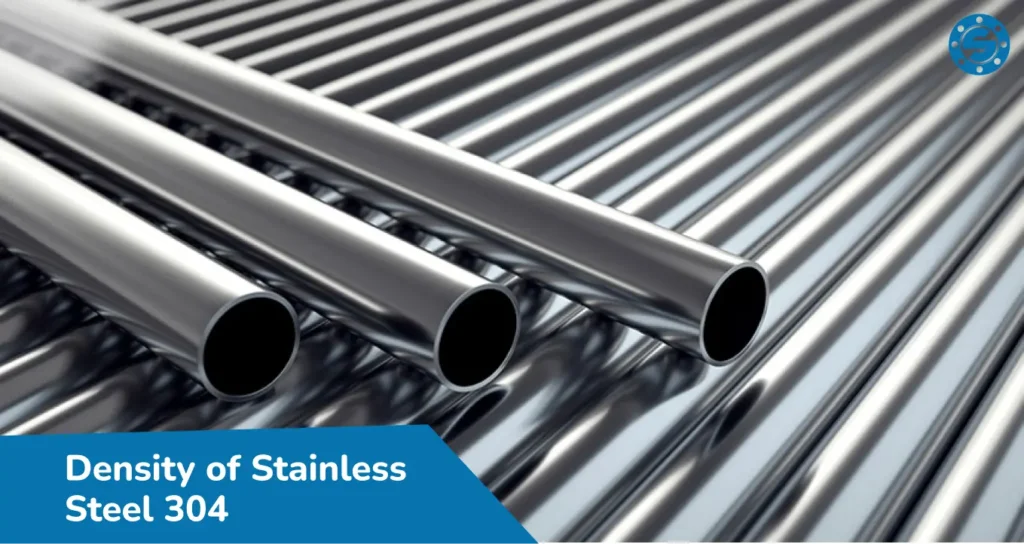Density of Stainless Steel 304

Stainless steel 304, also known as 1.4301, is widely used in various applications due to its excellent versatility. It is often referred to by its old name, 18/8, indicating its composition of 18% chromium and 8% nickel. This austenitic grade is known for its ability to be deeply drawn, making it a popular choice for products like sinks and saucepans.
The density of stainless steel 304, commonly noted as SS 304 density, is approximately 8.00 g/cm³ (8000 kg/m³). This density of ss304 contributes to its strength and durability. Type 304L is a low-carbon variant designed for improved weldability in heavy gauge components, while 304H, a high-carbon version, is suited for high-temperature applications.
Products like plates and pipes may be available as dual-certified materials that meet both 304 and 304L standards. For precise specifications, it is advisable to refer to the ASTM A240/A240M standards, which outline typical properties for flat-rolled products.
Stainless steel 304, known for its versatility and widespread use, has a density of 7,930 kg/m³ or 7.93 g/cm³. This density is equivalent to 0.286 lb/in³. Thus, one cubic meter of 304 stainless steel weighs 7,930 kg.
To calculate density (ρ), you use the formula ρ = m/V, where m represents mass and V represents volume. Density is measured in units such as grams per cubic centimeter (g/cm³), grams per cubic decimeter (kg/dm³), or kilograms per cubic meter (kg/m³) according to the International System of Units (SI).
SS 304 Density
Stainless Steel | Density (g/cm3) | Density (kg/dm3) | Density (kg/m3) | Density (lb/in3) | Density (lb/ft3) |
304 | 7.93 | 7.93 | 7,930 | 0.286 | 495.05 |
Stainless Steel 304 Chemical Compositions
| Element | % Present |
|---|---|
| Carbon (C) | 0.07 |
| Chromium (Cr) | 17.50 – 19.50 |
| Manganese (Mn) | 2.00 |
| Silicon (Si) | 1.00 |
| Phosphorous (P) | 0.045 |
| Sulphur (S) | 0.015b) |
| Nickel (Ni) | 8.00 – 10.50 |
| Nitrogen (N) | 0.10 |
| Iron (Fe) | Balance |
SS 304 Mechanical Properties
| Property | Value |
|---|---|
| Comprehensive Strength | 210 MPa |
| Proof Stress | 210 Min MPa |
| Tensile Strength | 520 – 720 MPa |
| Elongation | 45 Min% |
Density of SS 304 Physical Properties
| Property | Value |
|---|---|
| Density | 8,000 Kg/m3 |
| Melting Point | 1450 °C |
| Thermal Expansion | 17.2 x 10-6 /K |
| Modulus of Elasticity | 193 GPa |
| Thermal Conductivity | 16.2W/m.K |
| Electrical Resistivity | 0.072 x 10-6 Ω .m |
Stainless Steel 304 Corrosion Resistance
Stainless Steel 304 Heat Resistance
304 Stainless Steel Heat Treatment
Weight and Density of Stainless Steel 304 in kg/mm3, kg/m3 , g/cm3, lb/in3, lb/ft3
The density of stainless steel 304 is 7,930 kg/m³, which is also 7.93 g/cm³ or 0.286 lb/in³. This means one cubic meter of 304 stainless steel weighs 7,930 kg.
To calculate density (ρ), use the formula:
ρ=Vm
where mmm is the mass of the object and VVV is its volume. In the International System of Units (SI), density can be measured in grams per cubic centimeter (g/cm³), grams per cubic decimeter (kg/dm³), or kilograms per cubic meter (kg/m³).
Stainless Steel | Density (g/cm3) | Density (kg/m3) | Density (lb/in3) | Density (lb/ft3) |
304, 304L, 304N | 7,93 | 7930 | 0.286 | 495.05 |
316, 316L, 316N | 8.00 | 7930 | 0.286 | 499.42 |
201 | 7,8 | 7800 | 0.280 | 486.94 |
202 | 7,8 | 7800 | 0.280 | 486.94 |
205 | 7,8 | 7800 | 0.280 | 486.94 |
301 | 7.93 | 7930 | 0.286 | 495,05 |
302 | 7.93 | 7930 | 0.286 | 495,05 |
302B 302Cu | 8.0 | 8000 | 0.290 | 499,42 |
303 | 7.93 304 | 7930 | 0.286 | 495.05 |
305 | 8,0 | 8000 | 0.290 | 499.42 |
308 | 8,0 | 8000 | 0.290 | 499.42 |
309 | 7,93 | 7930 | 0.286 | 495.05 |
304 Stainless steel Applications
304 stainless steel is widely used across various industries due to its excellent properties. Here are some common applications:
- Saucepans: Its resistance to corrosion and ability to withstand high temperatures make it ideal for cookware.
- Springs, Screws, Nuts, & Bolts: Its strength and resistance to rust ensure durability and reliability in fasteners.
- Sinks & Splashbacks: Its ease of cleaning and resistance to staining and corrosion make it a popular choice for kitchen and bathroom fixtures.
- Architectural Paneling: Its aesthetic appeal and durability are used in building facades and interior design.
- Tubing: Common in industries like food processing and pharmaceuticals due to its hygienic properties and resistance to corrosion.
- Brewery, Food, Dairy, and Pharmaceutical Production Equipment: Its sanitary qualities and resistance to chemicals are essential for maintaining hygiene and preventing contamination.
- Sanitary Ware and Troughs: Its resistance to corrosion and ease of maintenance make it suitable for various sanitary applications.


